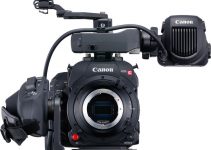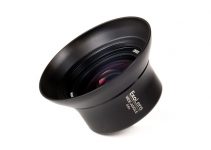When it comes to building your custom video editing PC, cable management is often a neglected yet essential aspect of the process to consider. Without proper cable management, it may be difficult for air to properly flow through your rig, not to mention the frustration that you’ll need to deal with every time you catch a glimpse of the scattered bundles of wiring, especially if your case comes with a glass front panel.
So, if you’re someone who’s ready to take on the challenge of proper cable management, check out these tips from Dmitry Novoselov of Hardware Canucks who goes into great detail on how to tackle this issue while putting together your next video editing PC.
Before actually organizing the cables of your system, it’s highly recommended to buy the biggest chassis for your PC within your price range so that you could have enough room to properly store your cables. This is especially true for the back panel since some manufacturers don’t leave enough space in this particular section of the case for cable management. In addition, try to get cases that have built-in channel guides that can help you neatly route cables. Cases like those made by NZXT are an excellent example in that regard.
The first step to perfect cable management suggests using the motherboard to conceal cables. Modern motherboards usually come with some fancy shields and covers on their motherboards, which is ideal for wrapping cables around to hide them along the way. Another technique you can use is by wrapping wires around the RAM modules to make your connections neater.
Secondly, when building out your PC, begin by first organizing the cables that come with your case before anything else. This includes the I/O cables (USB 3.0/Audio In) and the power/reset buttons. These cables tend to be the thinnest and most fragile in the system so by managing these right away, you can focus only on the more tedious and large ones later on.
If you have a non-modular power supply, cable management could always be a challenge because you have to deal with cables that you don’t need, whereas a module power supply allows you to remove unwanted connections. If you’ve got a non-modular PSU, bind together unused cables using zip ties or velcro before placing the PSU into your system. After securing the unit, route the appropriate cables through the grommets closest to the connection point.
Furthermore, no matter what you’re wiring, observe the route of your cable and see if you can hide it in any cavities or crevices such as the side of the back panel. Also, when you’ve connected a wire, pull back on it to tighten the length so that your connections aren’t left dangling.
Lastly, and probably the simplest technique is to tie the loose connections together using zip ties, twist ties, or velcro. While the first two options are the cheapest and most common, Novoselov recommends using velcro because it’s reusable and aesthetically pleasing. If you have a large number of thin wires that need consolidating, consider purchasing a wire sleeve to clean up the mess.
All in all, cable management is going to take a lot of your time and energy to carry out, so be patient and persistent. After the assembling process is completed and you’ve successfully managed to organize all your cables, you will be able to rejoice at the sight of a snug, neatly organized case that should also have a positive impact on the overall performance of your custom-built rig.
[source: HardwareCanucks]
Disclaimer: As an Amazon Associate partner and participant in B&H and Adorama Affiliate programmes, we earn a small comission from each purchase made through the affiliate links listed above at no additional cost to you.




